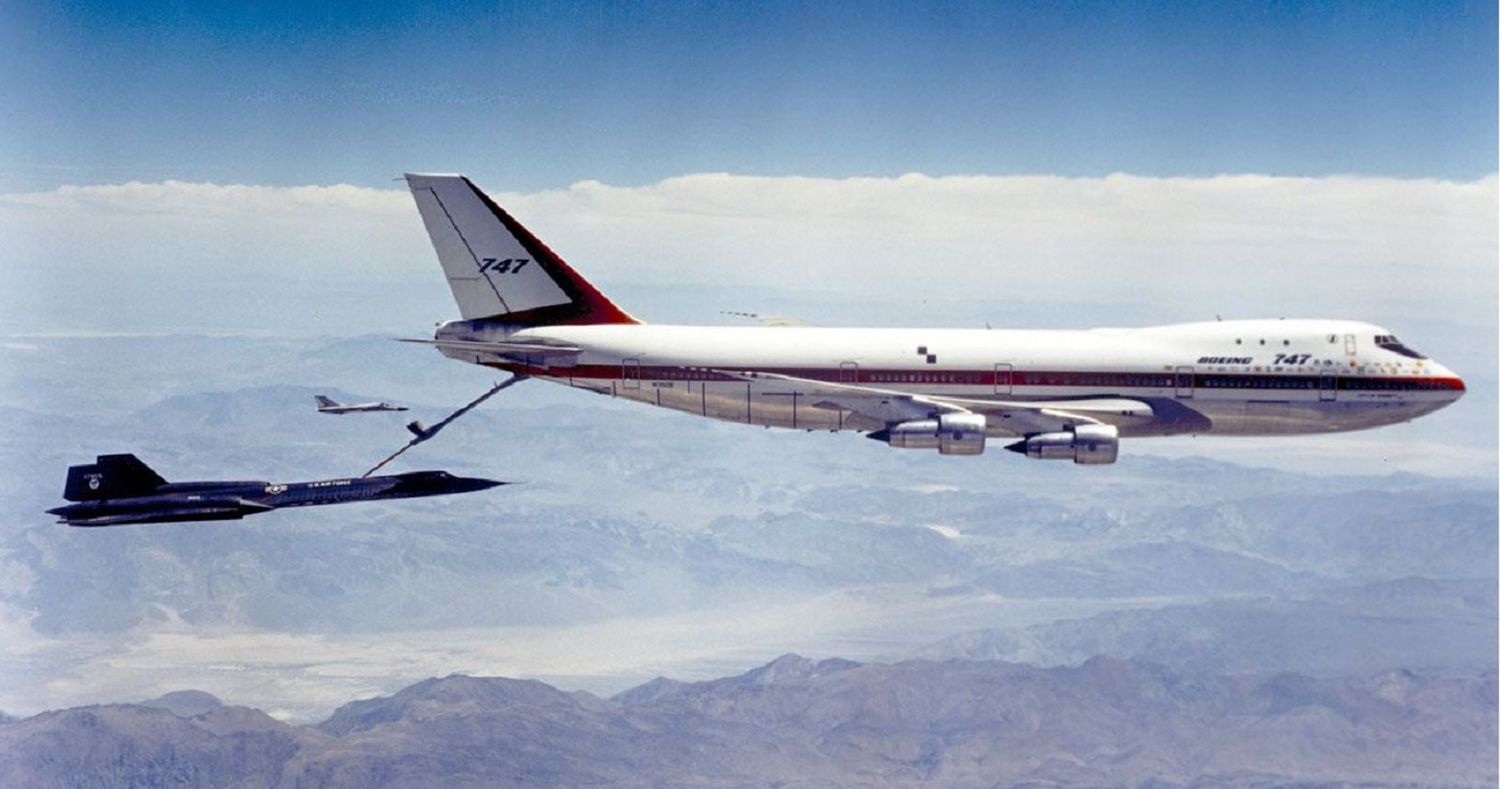In the 1970s, Boeing proposed a 747 adapted as an in-flight refueling tanker to compete in the USAF’s Advanced Cargo Transport Aircraft (ACTA) program. Although the competition was eventually won by the KC-10A Extender of the now extinct McDonnell Douglas, the tanker version of the “Queen of the Skies” did not fall into oblivion.
The KC-747 (or KC-25/33) was an ambitious proposal by Boeing to modify the Boeing 747 into a next-generation in-flight refueling tanker. The project was submitted to compete in the USAF’s Advanced Cargo Transport Aircraft (ACTA) program against the Lockheed C-5 Galaxy and L-1011, and the McDonnell Douglas DC-10. Boeing sought to combine the Jumbo’s transport capability with the most advanced refueling technology of the time.
Notable features:
- Increased fuel capacity: The KC-33 could carry up to 209,000 kg (461,000 pounds) of fuel, 100,000 kg (220,000 pounds) more than the KC-135 Stratotanker, the leading tanker aircraft of the era; and 40,000 kg (88,000 pounds) more than the A330 MRTT.
- Versatility: In addition to its primary role of in-flight refueling, the KC-747 could be configured for cargo transport, medical evacuation and command and control operations.
- Tank transport: upper deck reinforcements, a folding trunk and a deployable ramp would allow the KC-747 to carry armored vehicles, including the M-113 and up to a pair of M60 tanks.
The first flight test took place on July 6, 1972, at Edwards Air Force Base. During the 5+ hour flight, the characteristics of the 747 aircraft for the mission were evaluated. The receiving aircraft, a B-52 strategic bomber, tested different refueling approach positions.
For these tests, Boeing equipped a 747-100 (registration N1352B or RA-001, which was the first 747 built) with test hardware and major structural modifications were made to the rear fuselage to accommodate the refueling boom used by the KC-135s (provided by the USAF) and to house its operator’s window and control station. Although this test Jumbo was not fuel transfer capable, the installed boom system was fully functional.
During its extensive test campaign, the prototype made “dry contacts” with B-52 “Stratofortress”, SR-71 “Blackbird”, F-4 “Phantom II”, FB-111 “Aardvark” aircraft, which would have been its regular customers had it been selected by the USAF.
Too big, too costly
After eliminating Lockheed’s aircraft (the C-5 and TriStar) from the competition, Boeing and McDonnell Douglas became finalists. Although the 747 proved to be a very stable and capable platform for the mission, the U.S. Air Force ultimately chose the KC-10 as its next long-range tanker aircraft. Among the considerations that tipped the balance against the KC-33, the main ones were cost and size. The 747 is too large an aircraft, which imposed restrictions on the bases and airports that could receive it, reducing its operational flexibility. It was also the most expensive option. With the same budget, more KC-10s could be purchased and operated.
Rescued by the Shah
While the 747 tanker did not fare well at home, it did appeal to the Shah of Iran, Mohammad Reza Pahleví, who ordered two of these aircraft while the ATCA program was still underway, to mid-air refuel his fleet of hundreds of F-4 Phantom fighters. These aircraft were not known as KC-33s because they were developed under a commercial contract with Boeing and did not involve the U.S. Department of Defense. Ten other 747s without air-to-air refueling capability were also purchased for transport duties.
???? Kish Air Show- Day 3
Superstar arrived! ????
IRIAF Boeing 747-100 (KC747) & her fellowships performed an aerial refueling formation over Kish Island.©️Photo by Dara Z.#IRIAF #avgeek #Iran pic.twitter.com/pxLd3JJXwc
— Aerospacetalk (@Aerospacetalk) November 29, 2018
As of today, one of the two Iranian KC-747 jets (one was lost in an accident) is still serving in the Islamic Republic of Iran Air Force (IRIAF), which is quite an achievement, considering that the Iranian regime has been subject to international sanctions for decades.




Comentarios
Para comentar, debés estar registrado
Por favor, iniciá sesión